Repurposing everyday items into creative outdoor features has become an increasingly popular way to personalize garden spaces while reducing waste. With rising interest in sustainable living, top best garden junk ideas offer practical and affordable ways to give discarded materials a second life. Old tools, worn furniture, and forgotten household objects can all be turned into eye-catching focal points that add charm and character without breaking the budget. This approach not only supports eco-friendly practices but also helps create a truly unique outdoor setting. Keep reading for expert insights on turning unwanted clutter into standout elements for your garden.
Vintage Window Frame Trellis Wall
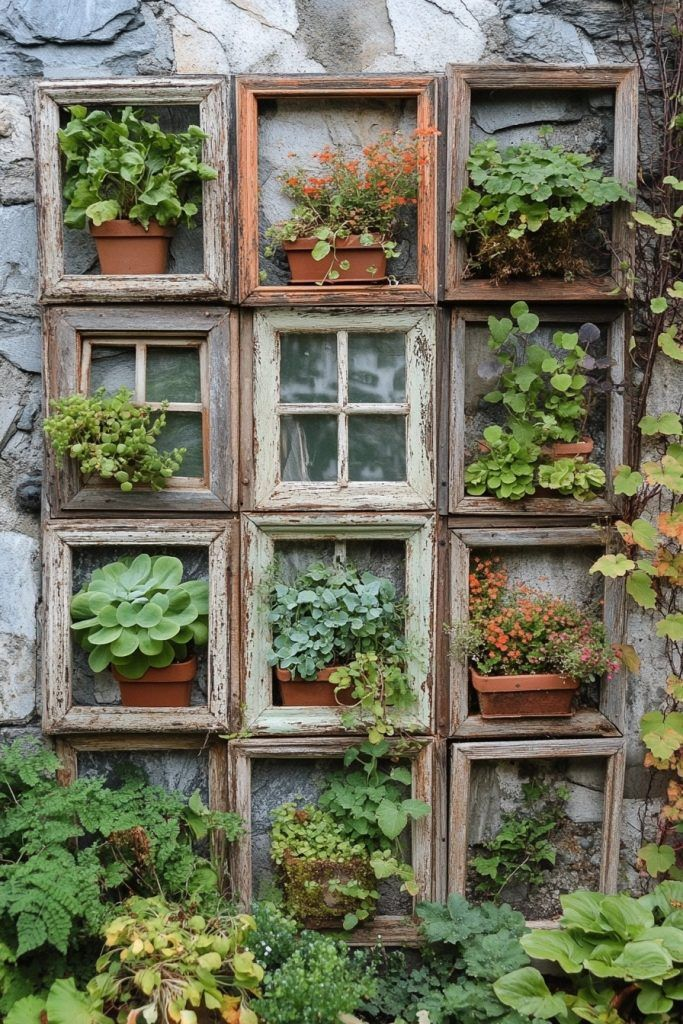
Vintage window frames offer more than nostalgic charm when repurposed creatively as a garden trellis wall. These classic wooden frames, with their weathered patina and rustic allure, become functional structures ideal for supporting climbing plants like roses, jasmine, or ivy. By securely mounting several frames together on a sturdy garden wall, gardeners establish an artistic lattice that naturally enhances vertical gardening. Plants intertwine through panes and wooden slats, creating a tapestry of greenery that adds depth and character. This method effectively recycles otherwise discarded window frames, making it an eco-friendly solution and an authentic focal point, significantly appealing to those passionate about sustainable gardening practices.
Old Drawer Stack Planter Tower
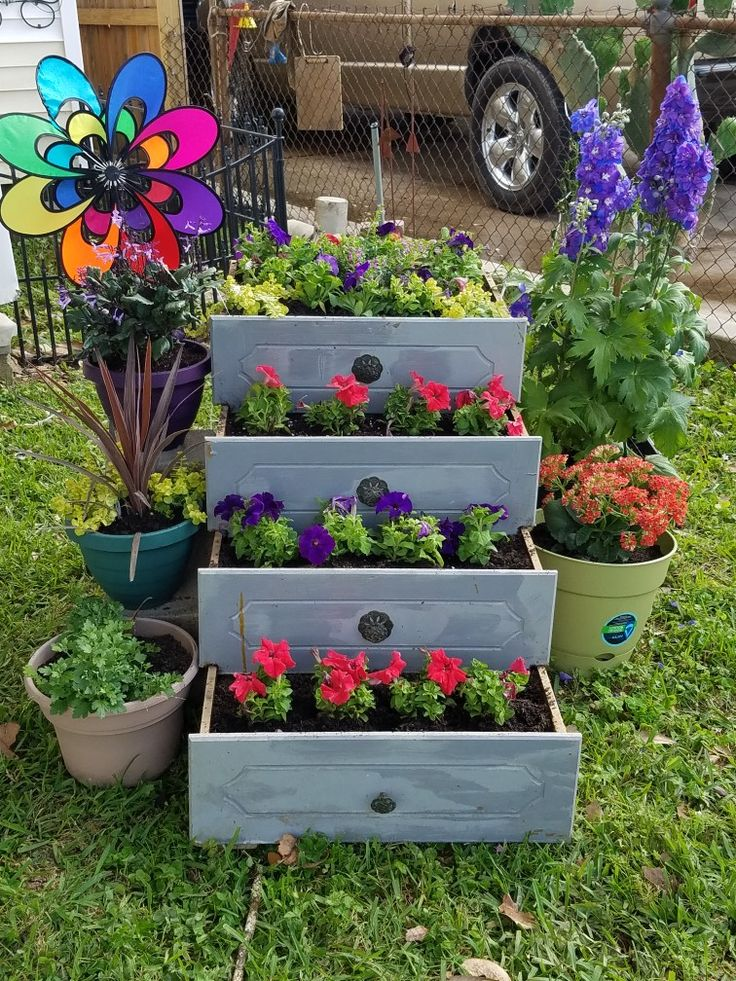
Old drawer stacks effortlessly transform into striking planter towers, making gardening easy and aesthetically pleasing. Stacked vertically, each drawer compartment becomes a unique planting bed, ideal for herbs, flowers, or cascading greenery. The tiered arrangement simplifies plant maintenance, watering, and harvesting, making this approach highly practical. Additionally, painted or distressed drawers offer distinct decorative elements, adding vintage charm and vibrant color accents that enhance any garden space. This inventive method revitalizes discarded furniture, demonstrating environmental consciousness while providing gardeners with a functional, space-saving solution that supports thriving plant growth in limited spaces.
Rusty Bicycle Garden Divider

Rusty bicycles can elegantly delineate garden areas as charming dividers. Strategically positioned, these vintage bikes not only organize garden layouts but also serve as striking decorative pieces. Gardeners often adorn handlebars and frames with hanging baskets or trailing vines, allowing plants to integrate naturally into the landscape. The rusted metal frame’s rustic aesthetic complements the organic surroundings, enhancing the garden’s overall ambiance. Moreover, this creative recycling of old bicycles exemplifies sustainable gardening practices, combining function and decorative artistry, while effectively partitioning garden zones in an engaging and eco-conscious manner. This charming setup enhances outdoor aesthetics and efficiently utilizes discarded materials creatively.
Colander Hanging Basket Drainage Hack
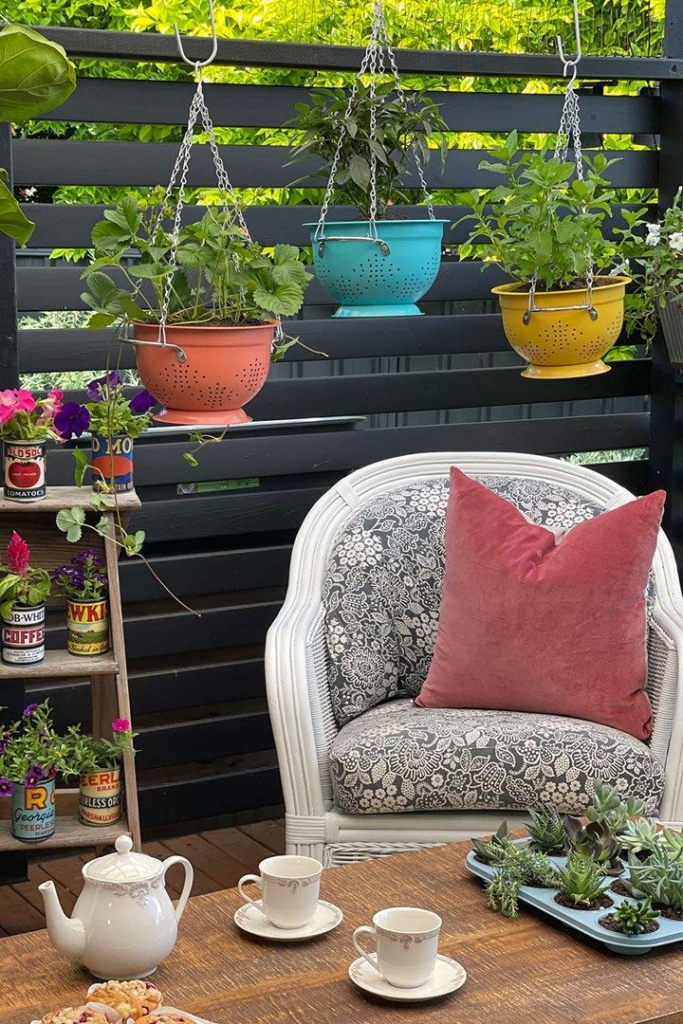
Old kitchen colanders become excellent hanging baskets due to their inherent drainage capabilities. Their perforated surfaces naturally prevent overwatering and root rot, ensuring optimal plant health. Suspended from garden hooks or overhead beams, these repurposed colanders provide unique visual appeal, perfectly suited for trailing plants like petunias or strawberries. This creative gardening hack not only enhances plant vitality but also promotes recycling of kitchenware, aligning with sustainable gardening principles. The rustic charm of vintage colanders further enriches garden décor, making it an effective, practical, and attractive gardening solution.
Bed Spring Vertical Tool Rack
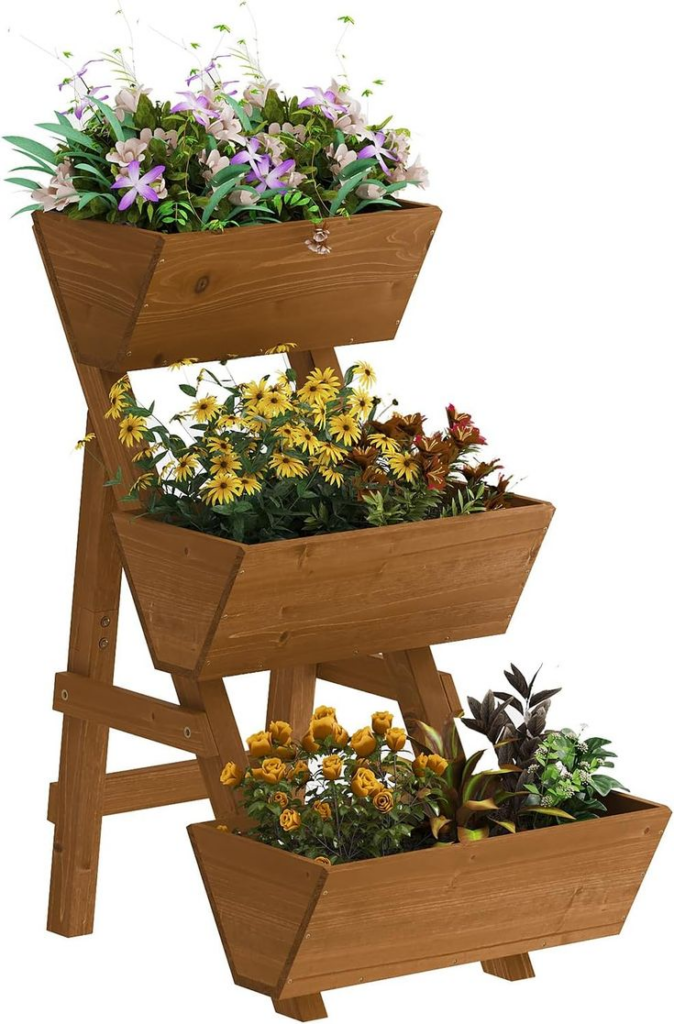
Bed springs find new purpose as innovative vertical tool racks, cleverly addressing garden organization. Mounted securely onto walls, their coiled springs conveniently hold gardening tools, gloves, and smaller pots, effectively decluttering garden spaces. This inventive reuse of old bed springs also introduces a rustic aesthetic, complementing gardens with a vintage theme. By repurposing discarded items, gardeners contribute to sustainability, significantly reducing waste while improving garden functionality. This method presents an aesthetically pleasing, practical, and environmentally friendly approach to garden organization, appealing broadly to eco-conscious gardeners seeking unique solutions.
Wooden Crate Rolling Seedling Cart
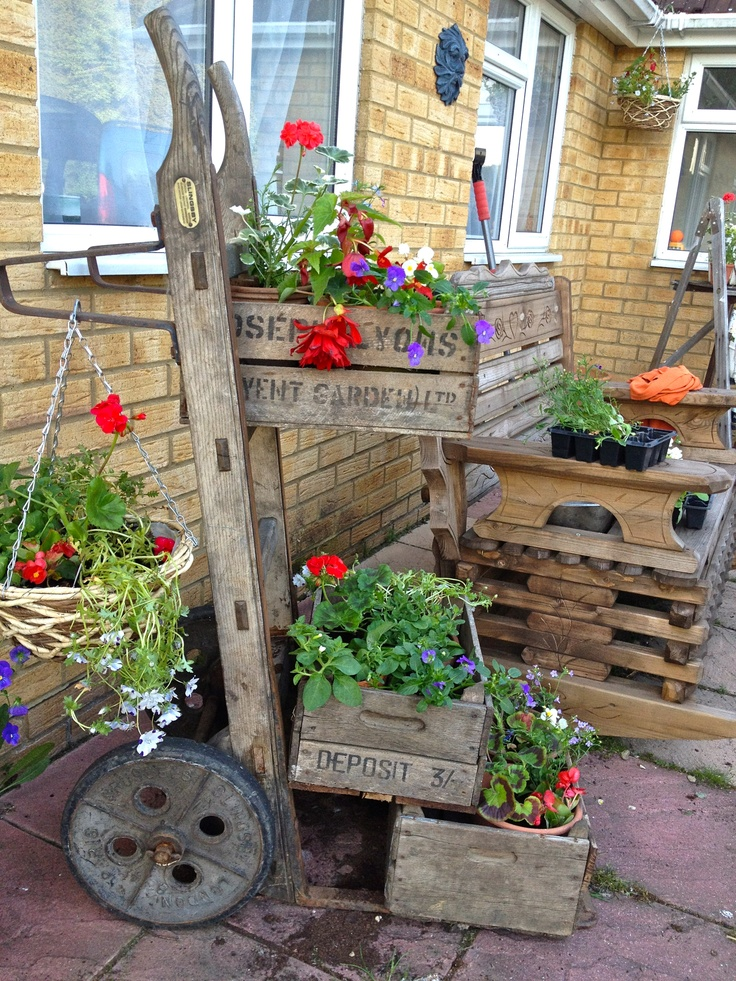
Wooden crates transformed into rolling seedling carts offer gardeners flexibility and practicality. Equipped with sturdy wheels, these crates facilitate easy transportation of seedlings throughout different garden areas or greenhouses. Individual compartments neatly organize seeds, pots, and tools, streamlining gardening tasks significantly. Their rustic wooden textures enhance visual appeal, seamlessly blending functional storage with vintage aesthetics. This mobile gardening solution not only improves garden efficiency but also emphasizes sustainable practices by repurposing old crates, thereby minimizing environmental waste. Ideal for gardeners aiming to optimize their gardening space with a practical, eco-friendly solution, wooden crate carts deliver functionality and charm effortlessly.
Lantern Frame Succulent Orb

Lantern frames creatively repurposed into succulent orbs serve as stunning decorative garden accents. With glass panes removed, the frame’s metal structure perfectly houses succulents arranged within moss-filled spheres, creating beautiful suspended displays. Hung from pergolas or garden archways, these succulent orbs thrive outdoors with minimal care requirements, ideal for busy gardeners. This imaginative reuse highlights sustainable gardening by repurposing lantern frames that might otherwise be discarded. The succulent orbs’ unique and captivating appearance enhances visual interest, complementing any garden style while promoting an eco-conscious gardening ethos.
Worn-Out Ladder Pot Staircase

Repurposed worn-out ladders easily transition into delightful pot staircases. Positioned strategically, each step of the ladder holds individual pots filled with vibrant flowers or aromatic herbs. This vertical arrangement efficiently utilizes space, making it ideal for small gardens or patios. The rustic charm of the aged wood complements any garden aesthetic, enhancing visual appeal. Gardeners appreciate this practical setup for easy plant maintenance and watering, while simultaneously embracing eco-friendly principles through the creative reuse of discarded ladders. This innovative garden solution transforms ordinary ladders into attractive, space-efficient vertical gardens, combining sustainability and style effortlessly.
Metal Headboard Vertical Veggie Trellis
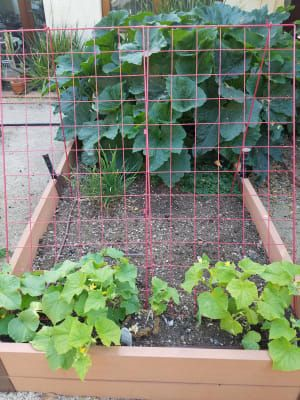
Metal headboards become practical vertical veggie trellises in garden spaces, adding functionality and vintage charm. Securely anchored, their sturdy frames support climbing vegetables such as cucumbers, beans, or peas, maximizing vertical gardening potential. Their ornate ironwork introduces an elegant decorative touch, enhancing garden aesthetics significantly. Repurposing these otherwise unused bed components underscores eco-friendly gardening practices, aligning seamlessly with sustainability values. Ideal for gardens seeking both practical utility and charming aesthetics, metal headboard trellises effectively showcase innovative reuse, benefiting gardeners seeking efficient and visually appealing gardening solutions.
Broken Mirror Mosaic Edging

Broken mirrors artistically repurposed into mosaic edging dramatically enhance garden beds. Fragmented mirror pieces embedded into garden borders create sparkling reflections that beautifully amplify natural sunlight. This visually striking approach adds dimension and visual depth to garden designs, attracting attention and highlighting floral displays. Additionally, reusing broken mirrors contributes positively to sustainable gardening practices, reducing waste creatively. The mosaic’s reflective quality also subtly expands the perceived garden space, beneficially impacting smaller garden layouts. This inventive use of broken mirrors effectively combines artistry, sustainability, and practical garden enhancement, significantly appealing to gardeners seeking unique, eco-friendly design solutions.
Shutter Privacy Screen Planter
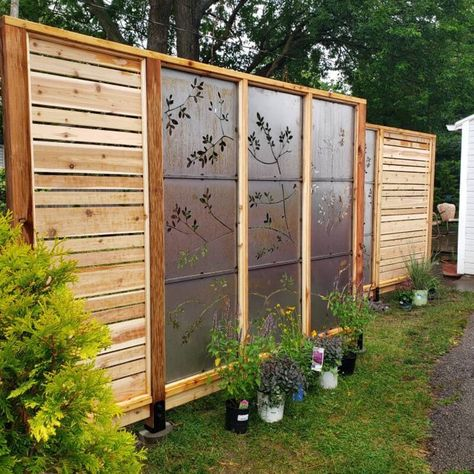
Shutters repurposed into privacy screen planters blend function with elegance, creating secluded outdoor spaces filled with lush greenery. By attaching planter boxes to the shutter slats, gardeners easily cultivate trailing plants, herbs, or flowers, effectively forming a living screen. This innovative solution stylishly conceals garden areas or patios, promoting privacy and maximizing vertical gardening space. Additionally, this method embodies sustainable gardening principles by creatively repurposing discarded shutters, significantly reducing environmental waste. The resulting aesthetic balances vintage charm with practical functionality, appealing to gardeners who value both style and sustainability.
Faucet Handle Hose Holder
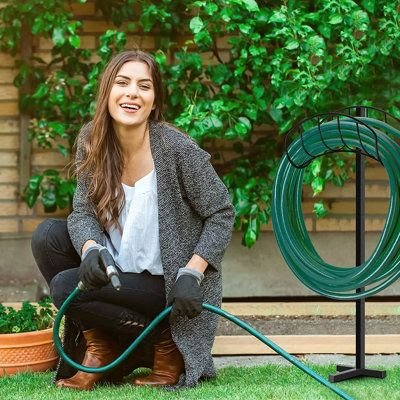
Old faucet handles serve wonderfully as creative hose holders in gardens, offering functionality and vintage flair. Mounted securely on walls or fences, these repurposed handles neatly coil garden hoses, reducing clutter and potential trip hazards. Their distinct metal textures and shapes enhance garden décor, lending a touch of rustic charm to outdoor spaces. Gardeners particularly appreciate the dual-purpose solution of practicality and sustainability, as this inventive reuse minimizes waste.
Wire Basket Wall Planter Grid
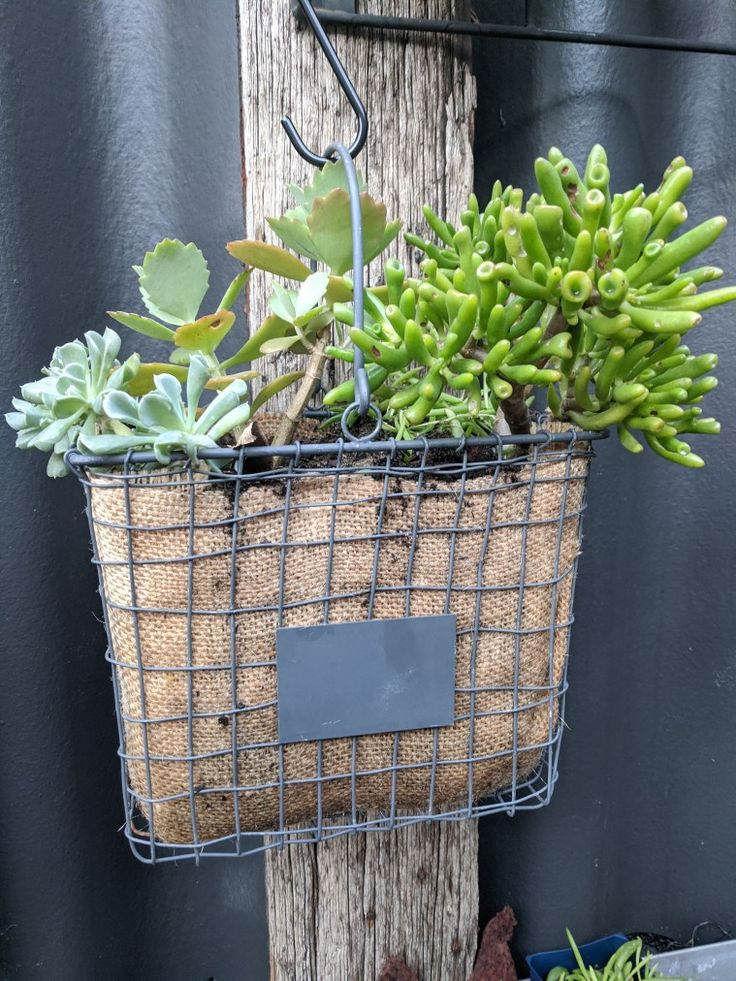
Vertical gardening takes on fresh character when wire baskets are arranged in a grid to display thriving plants. By mounting repurposed metal baskets onto a sturdy wooden frame or directly onto a fence, this system maximizes unused wall space while showcasing herbs, succulents, and trailing vines. Weather-resistant baskets ensure durability throughout seasonal changes, and their open design promotes healthy airflow around plant roots. Using uniform spacing provides visual balance, while mixing various greenery types creates dynamic texture. For added interest, vintage hooks or labels can identify each plant, reinforcing both function and charm. Regular watering is simple, as excess moisture drains easily, reducing the risk of root rot. Lightweight and easy to rearrange, wire basket grids offer flexibility in design, allowing gardeners to update plants or layouts as needed. By incorporating reclaimed materials, this approach not only adds practical growing space but also supports sustainable garden practices.
Teapot Spill Water Feature
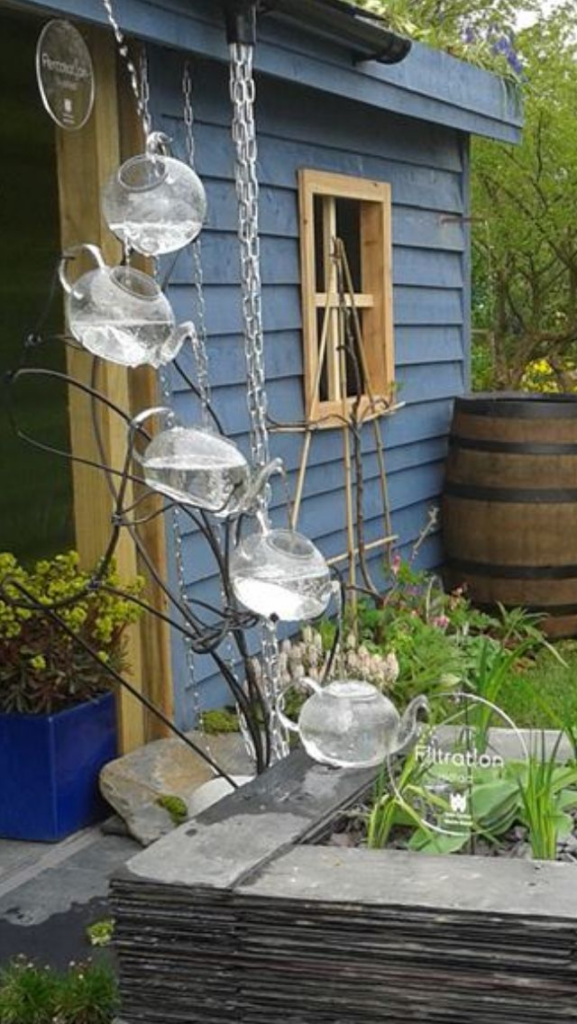
Unexpected focal points emerge when vintage teapots are transformed into charming spill water features. Securing an old metal or ceramic teapot at an angle above a shallow basin creates the illusion of a gentle, continuous pour, perfect for adding movement and tranquility to garden corners. Connected to a small recirculating pump, water flows seamlessly from spout to reservoir, providing ambient sound while attracting birds and pollinators. Weatherproofing the teapot and stabilizing it with brackets or sturdy stakes ensures lasting performance through varying conditions. Surrounding the basin with river rocks, moss, or flowering plants completes the scene with natural texture. Solar-powered pumps offer an energy-efficient option, keeping maintenance minimal. This whimsical feature delivers both visual interest and practical benefits, such as increased humidity for nearby plants. Repurposing a beloved teapot into a water element combines creativity with sustainability, contributing distinctive personality to any outdoor space.
License Plate Garden Labels
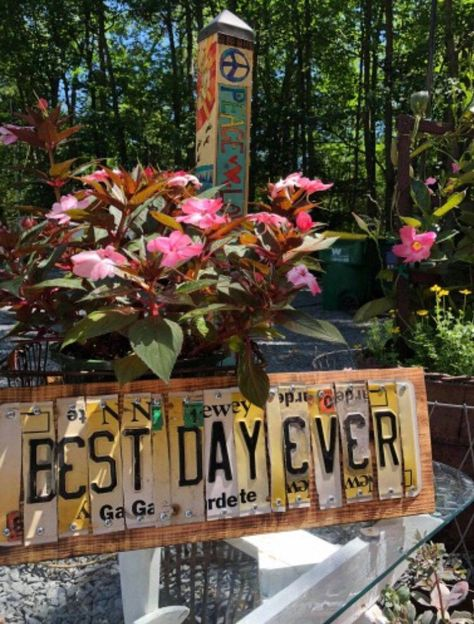
Durability meets vintage flair when old license plates are transformed into distinctive garden labels. By cutting plates into manageable strips and etching or painting plant names onto the surface, these weather-resistant markers withstand harsh sun, rain, and wind while remaining legible through the seasons. Attaching them to metal stakes, wooden dowels, or directly into raised beds provides reliable identification for herbs, vegetables, and flowers. Opting for plates with varying colors and textures introduces eclectic charm, complementing rustic or industrial garden aesthetics. Placement near the base of plants keeps pathways clear and allows easy reading while tending beds. To prevent sharp edges, sanding down the cut sides ensures safe handling during installation and seasonal updates. These repurposed markers reduce waste while solving a common gardening need, offering a long-lasting, creative solution that blends functionality with personal style in any outdoor growing environment.
